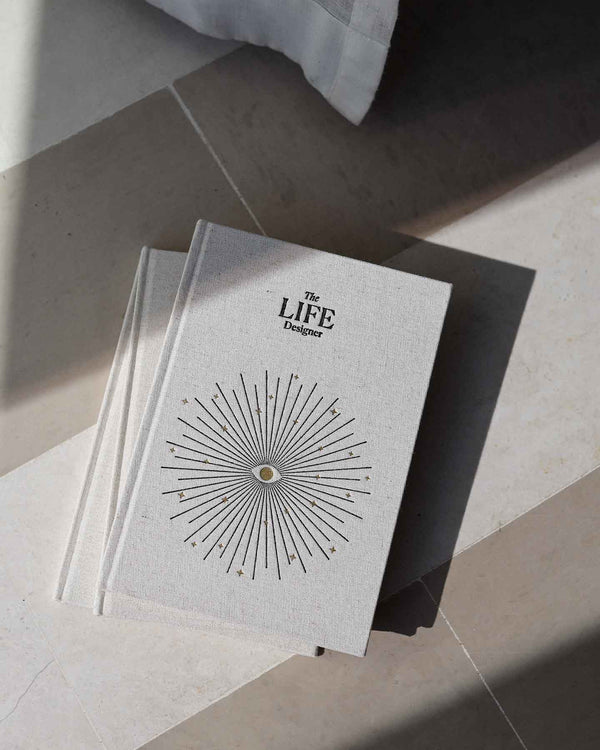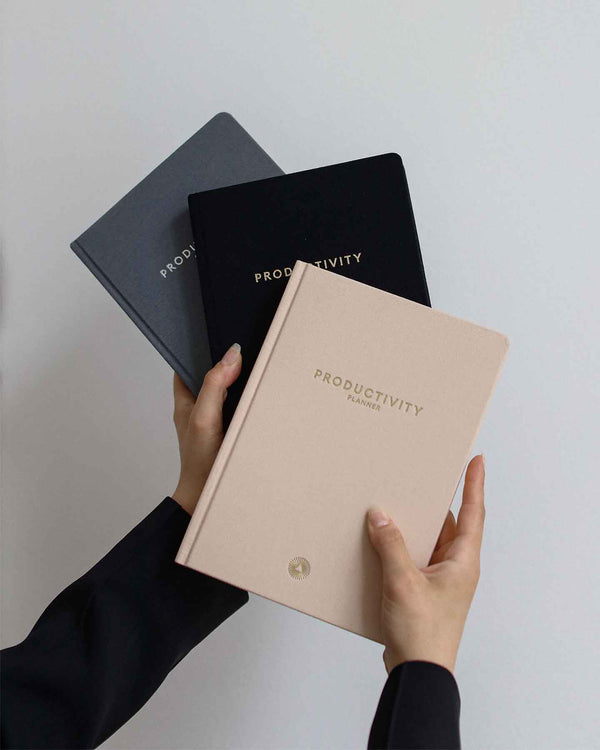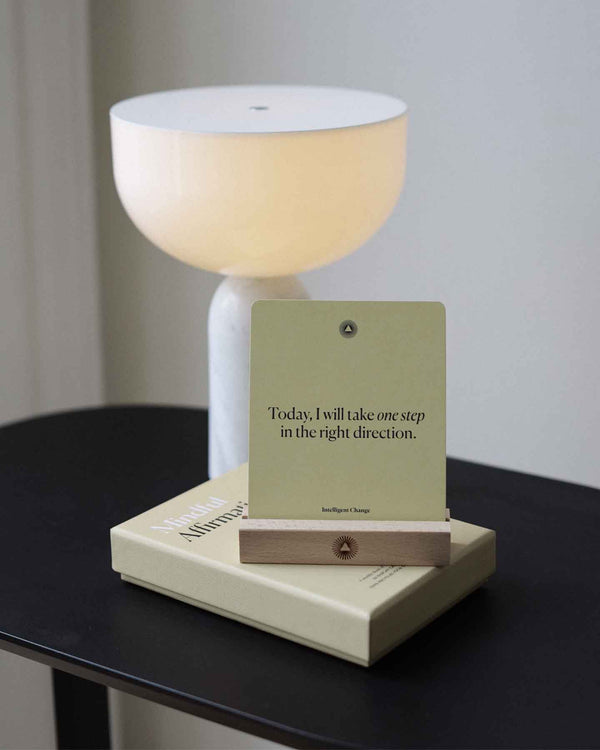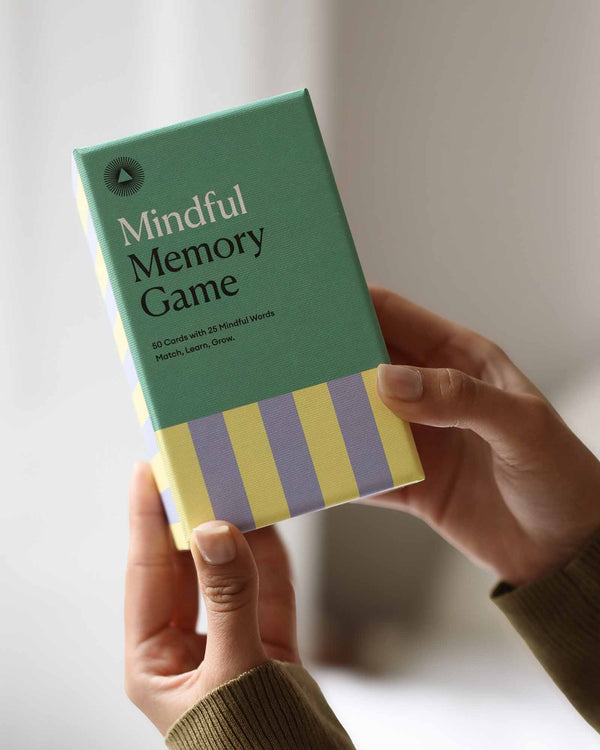Guide: Make Your Habits Stick
by Intelligent Change
What makes us––us? One of the most difficult philosophical questions can be answered in infinitely many ways. Is it the unique combination of personality traits formed through a lifetime of experiences, combined with a specific in-born basis inherited by our parents? Is it the sum of others’ perceptions and statements about us, or our own idea of self we built through interactions with the world?
The question as old as time may also be a complete illusion, along with the idea of the self, but while discussing these theories is a stimulating exercise for the mind, what we’re actually looking for here is a practical answer.
Humans are highly organized creatures. It may not seem like that when you look at your somewhat disorganized work desk or living room, but did you know that 40% of our awake behaviors are habitual? Yes, you’ve read that right. Life isn’t as random as you may think, because we spend almost half of our time in organized, patterned behavior we call habits.
In a colloquial sense, habits may often carry a negative connotation. Couples say they broke up because the relationship has become a habit, or we get bored with our jobs once we realize we’re no longer applying our potential, but repeating one and the same habit.
However, this is nothing more but a figure of speech. Habits are not necessarily boring or unfulfilling, since, as you probably already know, habits make our lives easier and help us achieve our goals. The tricky part with habits is that they can be incredibly challenging to stick to long-term––especially the rewarding, positive ones.
It’s been a while since we’ve talked about habits and rituals, and it’s prime time we return to this topic. Welcome to our Let’s make that habit stick guide.
What Are Habits?
To be able to make habits stick, we first need to define what they are.
Habits are a set of behaviors that make us––us. They are what we repeatedly do each day: what we do first thing after waking up, what we think about, who we spend our time with, which road we take to work, how we consume social media and screens, how we organize our wardrobe, which food we eat, how we procrastinate and how we stay productive. These are all results of our habits. Ultimately, habits build our narrative and form our personality traits, which is why we say they are what makes us who we are.
Habits are built over time. When we are children, our family organizes our time around certain routines. Although childhood is overwhelmingly filled with novelties, it’s also structured around certain routines. Routines help us form habits because they serve as cues for activities. For example, when a family member or kindergarten teacher says “wash your hands”, children know that it’s time to eat.
When we wake up, we usually go through our morning routine to come to our senses and feel ready to start the new day. In the evening, we prepare for a good night’s sleep through our night-time rituals. After a certain number of repetitions, everything we do becomes a habit.
Why Are Habits Good for Us?
There is a lot of similarity between routines and habits, however, habits are usually considered as automatic, almost reflex activities, while routines require more focus and attention.
Part of living a mindful, conscious lifestyle is to be fully present in the moment, focused, and self-aware, but it’s also important to automate certain things. This is the main benefit of building positive habits that stick: you get to unload your mental system and save your energy for more important things, knowing that you’re doing everything right for your wellbeing.
Let’s illustrate: if you have to force yourself to exercise every time, eventually, you’ll lose energy and stop challenging yourself. But, if you are motivated and make exercising a habit that sticks, your time-energy management rises up to a whole new level. Don’t get us wrong––the process of making a habit stick requires a lot of awareness and consciousness. And the process of identifying the habits that you should change requires even more.
How Long Does It Take to Make a Habit Stick?
In a study conducted in 2009, a group of researchers examined habit formation in 96 participants for 12 weeks. The participants were to choose eating, drinking, or activity behaviors to carry out each day. The average rate of habit adoption among participants was 2 months. To be more precise––66 days. Of course, this is an average measure, but the real numbers always vary depending on the personality, environment, and behavior of the person.
What is also interesting about that study is that missing out on a single opportunity to perform the behavior did not affect the process of habit formation. This is in a collision with our common belief about the disastrous effects of missing out on a workout or not journaling. Rome wasn’t built in a day, and it wasn’t torn in a day.
Building habits is far from an all-or-nothing process. It’s a long-term investment in yourself and your better future.
How Do I Know Which Habits I Should Change?
According to James Clear, author of the international best-seller Atomic Habits, there is a pretty straightforward way to determine which habits you need to change.
Point-and-Call System
According to James Clear, a simple analogy can be used from the Japanese railway system.
This is one of the best and most accurate railway systems in the world. The operators running the train apply the following ritual that helps them remain hyper-organized: as they go through the train, they point at different objects and call out commands. For example, whenever the train approaches a signal, they point at the signal and say its color. When the train is reaching or leaving each station, they point at the speedometer or timetable and say the exact speed or exact time out loud.
The employees working at the platform perform the same actions. Each detail of the process is located, pointed at, and named. This is called “pointing-and-calling”. The system is designed to reduce the probability of making a mistake as much as possible. It may seem funny but it works so well because this process is differently coded by the human brain.
When you only look at an object and register it with your mind, that’s one level of processing (perception). But when you point at it, you involve a motor task as well, which is elevating the consciousness about the object to another level. Finally, when you call out the name of the object, the mind is fully engaged and aware of the object on many different levels.
This system reduced the number of errors by an amazing 85% and cut down the number of railway accidents by 30%.
How to Use the Point-and-Call System for Changing Your Habits?
The purpose of this ritual is to make you more aware and conscious of an activity or object. If you use all of your senses and speech, you are more likely to notice if something’s off, because you have more systems engaged. Losing full awareness while performing a certain habit is something that happens often. This is how we actually end up with negative habits.
Our personal lives call for a point-and-call system of its own, and James Clear has designed a Habit Scorecard, an exercise designed to help people become more aware of their behavior.
First, take a piece of paper and list all of your daily habits. It can look something like this:
- Snooze the alarm three times
- Wake up
- Exercise
- Shower
- Make breakfast
- Start working around 9am
- Etc.
Then, assign a value to each of the habits: wake up = positive, neutral, or negative. Let’s say that waking up is a positive habit. Snoozing the alarm (especially three times)––not so much. But habits themselves don’t have value in a vacuum. To evaluate your habits, you need to know what your goals are. If your goal is to gain some weight, a strong and highly nutritional breakfast is a good idea but, if you want to lose weight, your diet and daily schedule should look somewhat different.
The habits are good if they are effective. Or, better say, if they solve problems. If your goal is to spend your free time in a more meaningful way, scrolling social media for a full hour in the afternoon is not an effective habit for that goal. It creates the problem rather than solves it. What you need to do is point-and-call the habits that you want to change and start working towards that change.
But what does this mean?
Let’s dive into what you need to do to make your habits stick once you’ve identified which habits you actually want to form.
How to Make Your Habits Stick 101

Now that you’ve built all this knowledge about habits, let’s talk action. How can you use this knowledge to make actionable steps that will ultimately result in you building positive, life-changing habits?
Prepare for Patience
Forming a habit may take between 18 and 254 days. If you’re in the average span, it may take around two months. And yet, this is only for the habit to form. But for the habit to stick, it will take some additional time. Develop patience, trust the process, and continue your journey with consistency.
Don’t Dwell Over a Missed Opportunity
If you don't perform a habit once or twice, avoid dwelling on it. Instead, focus on your progress and keep going on. One day doesn’t make a big difference in making your habit stick. It doesn’t have to have a deeper meaning. Realize what was the stuck point, analyze what you can do in the future to avoid it, and continue.
Learn about Your Triggers
Another key point James Clear mentions in his book is to learn how to identify and use the following five triggers to make sure your positive, rewarding habits stick.
Time
Although we can’t fully explain it, touch it, or sometimes even be sure that it exists, our body and brain are strongly wired on time as a concept. The most common types of habits, which are morning and evening habits, are fully dependent on time information, and the routines involve a cascade of micro-habits: exercising, showering, having breakfast, and so on.
During the day we also repeat certain actions at more or less the same time without thinking about it too much, like having a lunch, a coffee break, or an afternoon nap, or spending an hour scrolling social media after logging off for the day.
If you have a certain bad habit that’s clearly linked to time, you can replace it with a more positive habit by reflecting on these two questions:
- Which need am I trying to meet with the bad habit?
- How can I actually address my needs in a healthy way?
Here is a simple example to illustrate: if you go for a cigarette break because you want to connect with your colleagues, find another way to build relationships with them. Replacing one habit with another is much easier and the new habit will stick with more ease than if you only try to eliminate the bad one.
How to use this: allocate the date and time when you will perform the new habit for the first time. Set up a reminder and schedule it in your Daily Desk Pad and mark it as your habit of the day. Then replace the habit you want to change with the new action. In a matter of a few iterations, time will start triggering the new habit loop.
Location
Another powerful driver of the mind is space. How many times did you enter your kitchen to do something else and ended up grabbing a snack? This is because we build associative mechanisms between space and behaviors––it works on an automatic level.
When you enter a library, you start behaving quite differently than how you behave in a supermarket. Although location cues are often learned automatically, we can also consciously decide to use them to hack our habits.
One way is to assign a certain habit to a certain location. If you want to change the habits related to the particular places you visit often, you need to train yourself into replacing those habits with new ones.
For example, you got used to eating at your work desk, and now you get hungry every time you sit in your chair. To change this, you either need to associate eating with another location (dining room or kitchen table) by repeatedly choosing to eat there and being very conscious about it, and/or replace the habit of eating at the work desk with another habit––reading or journaling.
Events That Precede
So many of our habits are simple responses to other events. Every time we see a new email notification, we open the inbox right away. When the red light on the traffic appears, we stop, and we go only when the green light is up. This is how it works: there is a preceding event that we’ve somehow connected to a certain behavior via learning, as these connections are not reflexes nor are they naturally formed.
The preceding event can be the most useful cue for habit building. This is how you work on habit stacking––stacking a new habit on top of an existing habit. You simply use one habit that you already have as a trigger for another habit: every morning after finishing your coffee, you will read one chapter of a book.
You can use preceding event cues to build a healthy morning and evening routine, because these are usually organized as activities and behaviors that just follow up on each other. If you incorporate daily gratitude practice and filling out The Five Minute Journal into your morning and evening routine, and use the preceding event principle to make this habit stick, it’s very unlikely that you’ll ever miss an entry.
It will look something like this: waking up triggers teeth brushing and drinking a glass of water, which reminds you that you should exercise or stretch, which is a cue for showering, which is a cue for breakfast and afterwards journaling.
Emotions
Emotional states are usually cues for certain bad habits. The associations are usually developed on a deeply subconscious level and with the goal of satisfying a certain need. For example, getting nervous or upset makes some people want to light a cigarette to calm down or to eat something sweet to cheer them up.
One simple example of how to use this is to notice when your body holds tension. For example, you may have noticed how your back and shoulders sometimes hurt almost for no reason. When we get anxious, we usually stiff our shoulders and back muscles, but we’re unaware of what we’re doing until it starts hurting.
If you learn how to be aware of what you’re doing, you can use this bodily reaction as a cue to start relaxing and practicing deep breathing or meditation, which can eventually turn into habits that instantly calm you down every time you feel stressed or overwhelmed.
Track your mood and be 100% honest with yourself every step of the way of building new healthy habits–observe and accept negative emotions (should they occur), and keep in mind that monitoring your emotional responses will help you pick the right habits in the first place.
Other People
The people we spend time with have a huge impact on how we behave. As human beings, we conform to certain norms of the group so that the group can function properly and we can feel accepted (but if this becomes toxic, then we’re talking problems).
Curate your circle of connections and friends. Reflect on how certain people in your life make you act and feel, and which habits time spent with them triggers. If you want to develop a healthy habit and start exercising, start with someone who has already built this habit rather than with a friend who’s never exercised before––that way you both can be at risk of quitting more easily.
Habit Stacking
Habit stacking is based on using other habits, activities, and behaviors as cues for new habits.
The formula, proposed by James Clear, goes like this:
After {Already established habit}, I will {New habit}
Or
Before {Already established habit}, I will {New habit}.
Before having my morning tea, I will write down what I am grateful for.
Habit stacking is based on associative learning and on Hebb’s rule, famous in neuroscience and machine learning, which goes: The neurons that fire together, wire together.
This means that if you repeat journaling and tea drinking one after another enough times, the “journaling neurons” will start firing together with the “tea drinking neurons”, and there it is––another healthy morning habit is formed.
Start Small and Increase Slowly
Thinking big starts at the atomic level. This way, it might take longer for you to form a habit, yet you’ll have better chances of retaining it.
Let’s imagine that gratitude is the new habit you’d like to instill. There are a few options on how and what to do, and one of them is to start small and use The Five Minute Journal. After writing down your gratitude for the day and reflecting on that day’s highlights, you can increase your new behavior little by little each day and week by practicing other forms of gratitude, until you feel like you’ve mastered the habit and it’s become a part of you and your lifestyle.
This means that whatever it is that you set yourself to accomplish, making big steps right away (today you’re doing 5 squats and tomorrow 100), will bring you nowhere. The best way is to apply consistent, smart micro-changes. Even a 1% change or increase each day or a 10% increase on a weekly level in the activity that you’re doing is a big progress over a full year.
When it comes to habit formation, journaling is one of the systems that will keep you on track. Noting down your 1% changes every day will help you build accountability and self-awareness. Start by analyzing everything you do during an average week. You’ll be able to create time frames for new practices and pinpoint where your scheduling and organization needs improvement. Time likes to slip away on actions that could be eliminated and substituted with healthier habits.
Now, the time has come to start tracking your progress. Every day, make a note of how you performed, what went well, and where you fell short. Did you manage to execute the task exactly how you planned? What small changes could you implement to do it better tomorrow? What stage are you at when it comes to your satisfaction? Is the habit still difficult or more tolerable?
Habit building is somewhat paradoxical: the habits that are harmful for our wellbeing stick more easily than those we want to build, which require more effort and awareness. To reach big, shiny dreams it takes adopting the right, daily habits into your routine and repeating them over longer periods of time.
Start with defining your why and identifying which small habits will help you achieve your long-term goals. Keep track of the intentions behind your choices, and make space for gratitude, it will give you necessary perspective and equip you with patience.
Cultivating good habits will pave the way for you to become who you want to be and reach the heights you’ve always dreamed of. Small tweaks can lead to major transformations and trigger various revolutions. After all, our habits shape the quality of our lives.











